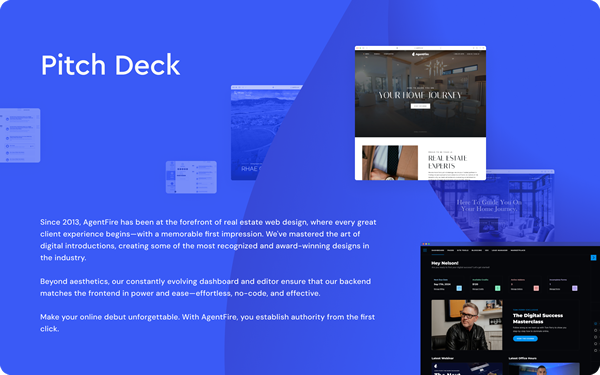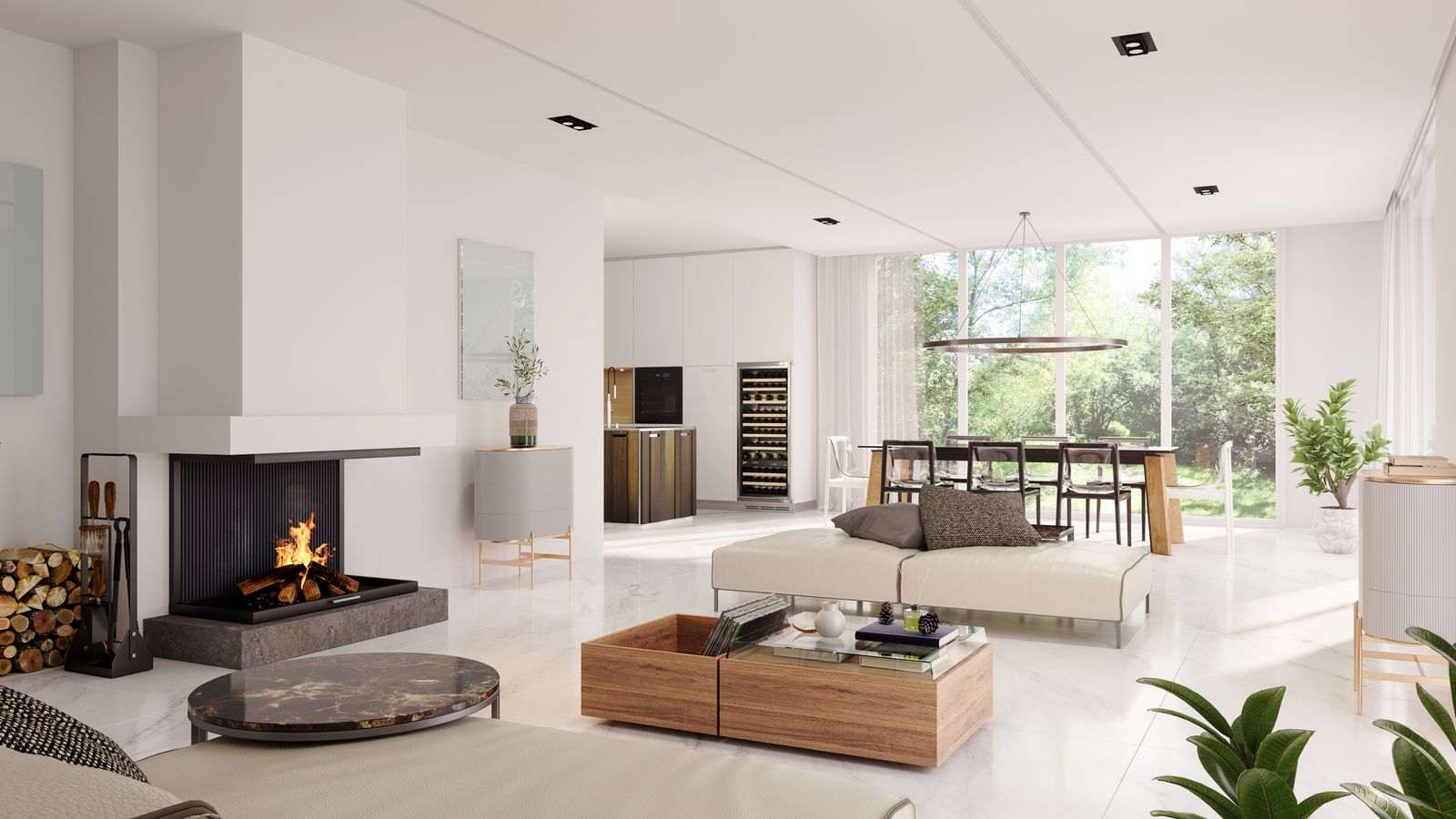Great staging gets results in real estate by helping homes sell faster and for more money. Learn how staging influences buyer perception and offers.
Branding & Design Industry Insights Seller Tactics
In the real estate industry, presentation plays a measurable role in how quickly a home sells and at what price. Staging is one of the most widely used techniques to influence buyer perception and improve listing performance.
Buyers often make decisions based on emotion and first impressions. Staging shapes how a property looks and feels, which can guide a buyer toward making an offer.
This article explains what home staging is, how it affects buyer behavior, and why it has become a standard practice in residential real estate.
What Is Home Staging and Why It Matters
Home staging is the process of preparing a property for sale by arranging furniture, decor, and accessories to highlight its features and make the space feel more inviting. It may involve rearranging existing items, bringing in rental furniture, or making minor cosmetic updates.
According to the National Association of Realtors (NAR), about 29% of real estate agents saw a 1-10% increase in dollar value offered for staged homes. Almost half of sellers’ agents reported that staging helped reduce time on market.
Staging helps buyers picture themselves living in the home. This effect is supported by data showing that over 80% of buyers’ agents believe staging helps buyers visualize a property as their future home.
Key benefits of home staging:
- Faster sales: Staged homes typically spend less time on market compared to unstaged properties.
- Higher offers: Properly staged homes often sell for more than similar unstaged properties.
- Better first impressions: Staging creates an emotional connection with buyers from the moment they walk in.
How Staging Influences Buyer Perception and Offers
Most buyers form their first impression within 7-10 seconds of entering a home. This snap judgment can significantly impact their overall perception of the property’s value and desirability.
A well-staged home presents a clean, organized, and inviting space. This presentation can lead buyers to believe the home is well-maintained and worth more than a comparable unstaged property.
Staging also helps buyers form emotional connections with a property. When they can easily imagine living in the space, they’re more likely to make stronger offers and act quickly.
Specific ways staging influences perception:
- Perceived value: Well-chosen furnishings make spaces look more expensive and valuable.
- Space perception: Strategic furniture placement makes rooms appear larger and more functional.
- Emotional response: A “move-in ready” appearance creates comfort and excitement that supports buying decisions.
Proven Staging Methods to Accelerate Sales
Showcase Bright and Spacious Interiors
Light and space significantly impact how people feel inside a home. To maximize brightness, use light-colored window treatments and clean windows thoroughly. Mirrors placed across from windows can reflect natural light and create the illusion of more space.
Lighting plays a crucial role in staging. Replace outdated fixtures with modern ones and use daylight LED bulbs to eliminate dark corners. A well-lit home photographs better and feels more welcoming during showings.
Before-and-after comparisons often show dramatic differences when yellow lighting is replaced with white bulbs and bulky furniture is removed. These simple changes make rooms appear more open and inviting.
Create Emotional Connection
Lifestyle vignettes are small, styled scenes that help buyers imagine daily life in the home. These might include a breakfast tray on a bed, a reading nook with a chair and lamp, or a dining table set for a meal.
In the living room, a throw blanket and book on an armchair suggest a place to relax. In the bathroom, white towels, a candle, and a small plant create a calm, clean feel. These setups guide the buyer’s imagination.
Buyers respond more strongly to homes that feel lived-in without being too personal. The goal is to create a sense of possibility – helping them see the home as theirs rather than someone else’s.
Update Key Decor Elements
Some updates deliver big impact without high cost by focusing on color, texture, and simplicity.
High-impact, low-cost updates include:
- Replacing outdated light fixtures with simple, modern designs ($50-150 each)
- Painting walls in neutral colors like soft gray or white ($150-300 per room)
- Swapping old cabinet hardware in kitchens and bathrooms ($2-5 per handle)
- Adding decorative pillows in stylish colors ($15-40 each)
- Using simple, modern bedding in the primary bedroom ($100-200)
- Adding greenery with low-maintenance or faux plants ($20-60 each)
Practical Steps for Staging a Home Without Breaking the Bank
1. Declutter and Depersonalize
The first and most important step in staging is removing excess items and personal belongings. This makes spaces feel larger and helps buyers focus on the home itself rather than the current owner’s possessions.
Start by tackling one room at a time. Sort items into keep, donate, sell, or store categories. Remove anything that isn’t necessary for daily use or that doesn’t enhance the staging.
Items to remove or store include:
- Family photos and personal artwork
- Excess furniture that crowds rooms
- Toys, pet supplies, and hobby materials
- Kitchen appliances not used daily
- Bathroom toiletries and personal care items
- Refrigerator magnets, notes, and calendars
2. Focus on Affordable Enhancements
You don’t need to spend thousands on staging to get results. Many effective staging techniques cost very little but deliver significant visual improvement.
DIY staging tips that create a professional look:
- Use white or beige bedding to make bedrooms feel calm and clean
- Hang curtains higher and wider than windows to create the impression of larger windows
- Group decorative items in sets of three for visual balance
- Add mirrors to reflect light and make rooms feel larger
- Use matching towels in bathrooms for a coordinated appearance
3. Rearrange for Optimal Flow
Furniture placement affects how people move through a room and how large the space feels. Good flow means walking paths are open and the layout feels natural.
Basic furniture placement principles:
- Arrange seating to face focal points like fireplaces or windows
- Keep walking paths at least 30-36 inches wide
- Avoid placing furniture directly in front of doors or windows
- Use rugs to define areas in open-concept spaces
- Position beds with at least 24 inches of space on each side
These adjustments create a consistent and functional layout that helps buyers understand how to use each space.
Key Areas That Make or Break the Sale
1. Living Room
The living room often creates the first impression when buyers enter a home. It sets the tone for the rest of the showing and helps buyers imagine daily life in the space.
Effective living room staging focuses on creating a clean, functional, and inviting atmosphere. Use neutral colors, minimal decor, and balanced furniture placement to make the room feel larger and more welcoming.
A typical arrangement includes a sofa facing the focal point (fireplace or media center), two accent chairs, and a coffee table with enough clearance to move around comfortably. The goal is to create conversation areas while maintaining open pathways.
2. Kitchen
Kitchens sell homes. Buyers carefully evaluate this space for both functionality and cleanliness, making it a critical area to stage properly.
To stage a kitchen effectively, remove most items from countertops, leaving only a few decorative elements like a fruit bowl or coffee maker. Clean thoroughly, including inside cabinets and drawers, as buyers often open these during showings.
Quick kitchen updates that improve buyer perception:
- Replace cabinet hardware with modern pulls
- Clean or replace grout between tiles
- Add a small plant or fresh flowers
- Use new dish towels in coordinating colors
- Remove refrigerator magnets and personal items
- Organize pantry and cabinet interiors
3. Primary Bedroom
The primary bedroom should feel like a peaceful retreat. Buyers look for a space that feels calm, private, and well-maintained.
Effective bedroom staging includes a neatly made bed with neutral bedding, matching nightstands with lamps, and minimal wall art. Remove personal items and excess furniture to maximize floor space and create a sense of openness.
Lighting should include both overhead and ambient sources. Natural light should be maximized by using light window treatments. The goal is to create a universally appealing space that feels clean and restful.
Overcoming Common Staging Roadblocks
Handling Vacant Properties
Empty homes often feel cold and uninviting. Without furniture, rooms can appear smaller, and buyers may struggle to understand how spaces function.
Options for staging vacant properties include:
| Staging Type | Average Cost | Best For | ROI |
|---|---|---|---|
| Full Staging | $2,500-5,000+ | Luxury homes | High (8-10%) |
| Partial Staging | $1,000-2,500 | Key rooms only | Moderate (5-8%) |
| Virtual Staging | $100-300/room | Limited budgets | Varies |
Full staging uses real furniture throughout the home. Partial staging focuses on key rooms like the living room, kitchen, and primary bedroom. Virtual staging digitally adds furniture to listing photos but doesn’t help during in-person showings.
Staging an Occupied Home
Staging while homeowners still live in the property presents different challenges. The goal is to create a balanced look that’s both functional for the residents and appealing to buyers.
When staging an occupied home, focus on these priorities:
- Remove clutter and personal items from visible areas
- Clean thoroughly, especially kitchens and bathrooms
- Rearrange furniture to improve flow and highlight features
- Add neutral decor elements where needed
- Update lighting to brighten spaces
Working with the homeowner’s existing furniture often requires compromise. Focus on creating a cleaner, more neutral look while maintaining livability.
Budget Constraints
When funds are limited, focus on high-impact changes that deliver the biggest visual improvement for the least cost.
Most effective low-cost staging interventions:
- Paint walls in neutral colors
- Deep clean all surfaces, windows, and floors
- Remove excess furniture to create more space
- Add inexpensive throw pillows or bedding in current colors
- Replace dated light fixtures or just the bulbs
- Clean or replace cabinet hardware
These simple changes can dramatically improve a home’s appearance without significant expense.
Elevate Every Listing from Start to Finish
Home staging supports the entire selling process by improving how a property presents to potential buyers. From listing photos to final walkthrough, staged homes typically perform better in time on market, offer price, and buyer engagement.
In competitive markets, professionally staged listings stand out because they photograph better, appear more attractive in online searches, and help buyers visualize themselves in the space. This advantage can make the difference between a quick sale and a listing that lingers.
AgentFire websites include features that showcase staged properties effectively. High-resolution galleries, virtual tours and custom property pages help present staged homes in their best light. To learn how these tools can help market your staged listings, visit https://agentfire.com/schedule-a-demo/.
FAQs About Home Staging
Does virtual staging work as well as physical staging?
Virtual staging works well for online listing photos and is cost-effective for vacant homes with limited budgets. However, it doesn’t provide the same in-person experience during showings as physical staging.
What return on investment can sellers expect from professional staging?
Professional staging typically results in a 1-10% increase in sale price compared to similar unstaged homes. The investment in staging (around 1-2% of listing price) generally delivers a 5-10% return.
How long before listing should a seller stage their home?
Staging should be completed 1-2 weeks before listing photos and marketing begin. This timeframe allows for adjustments and final cleaning before the property goes live on the market.






